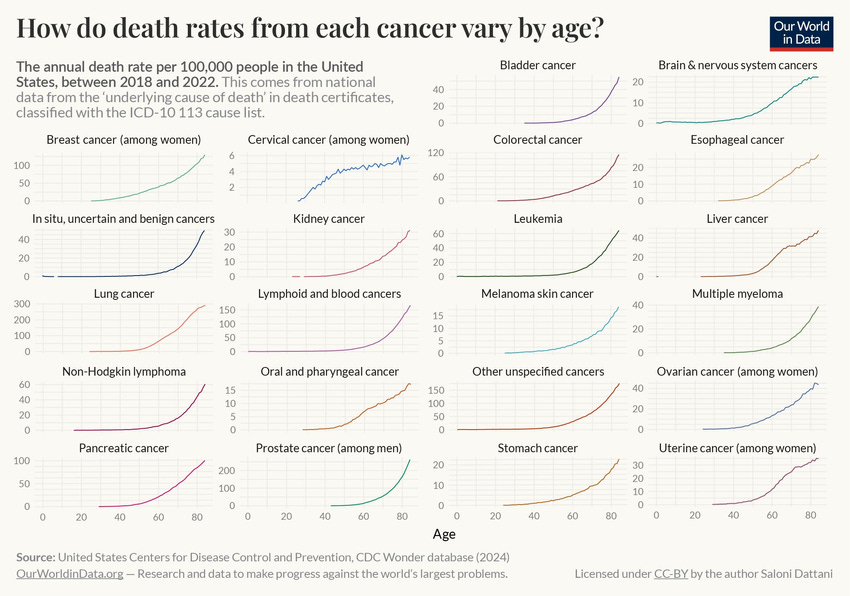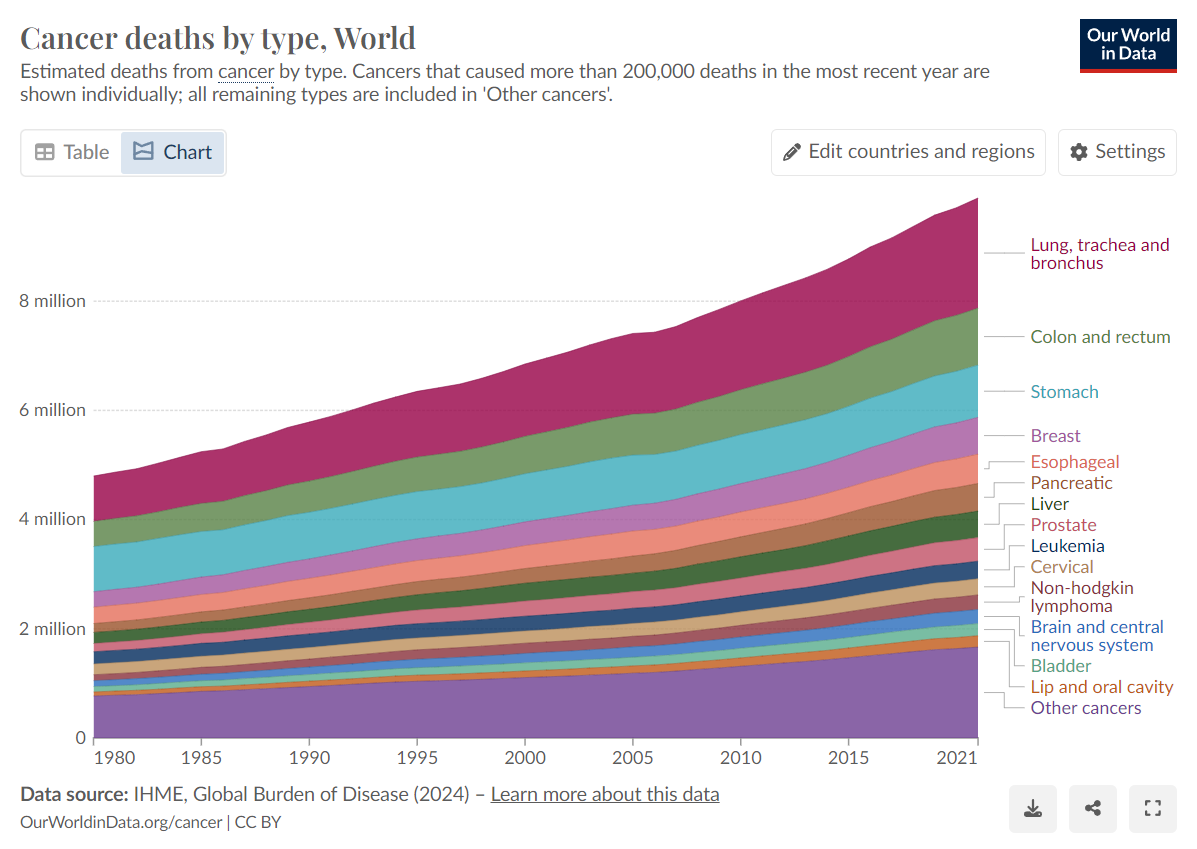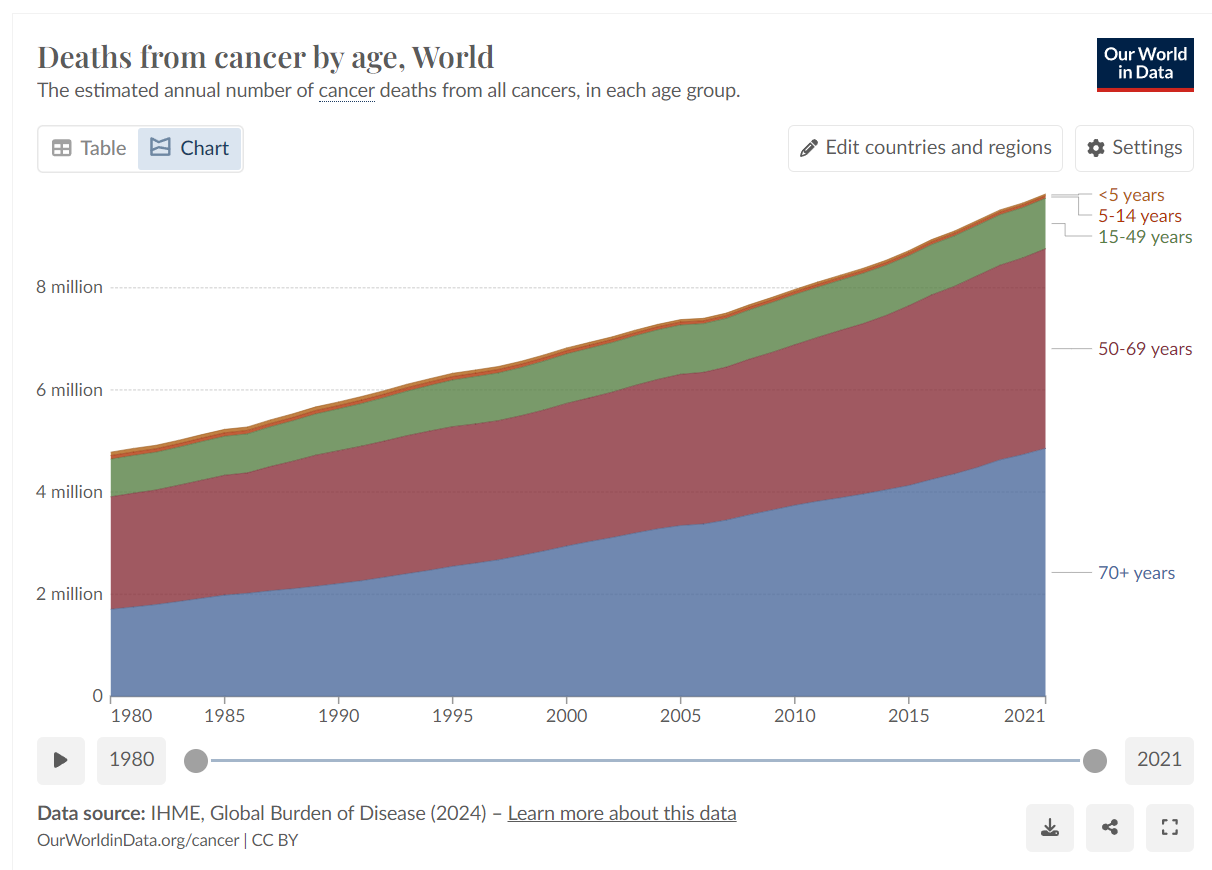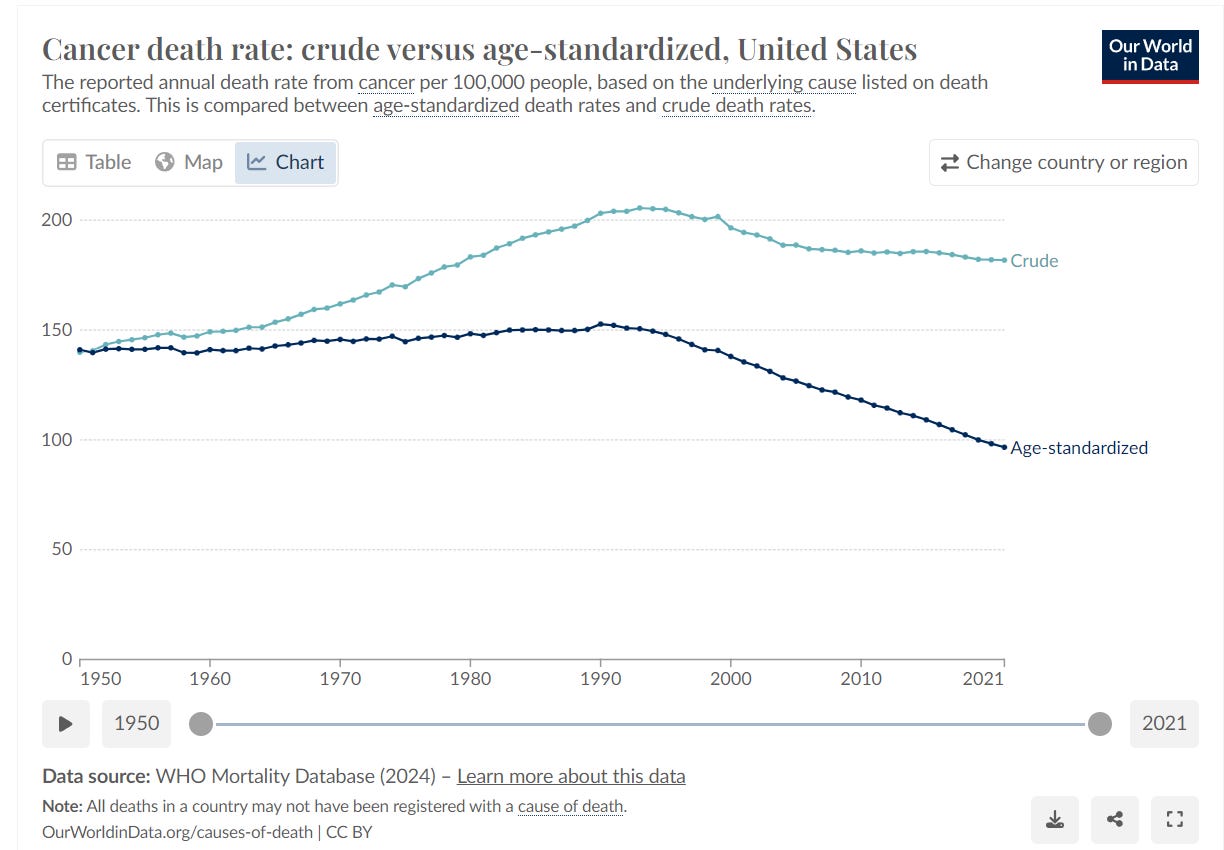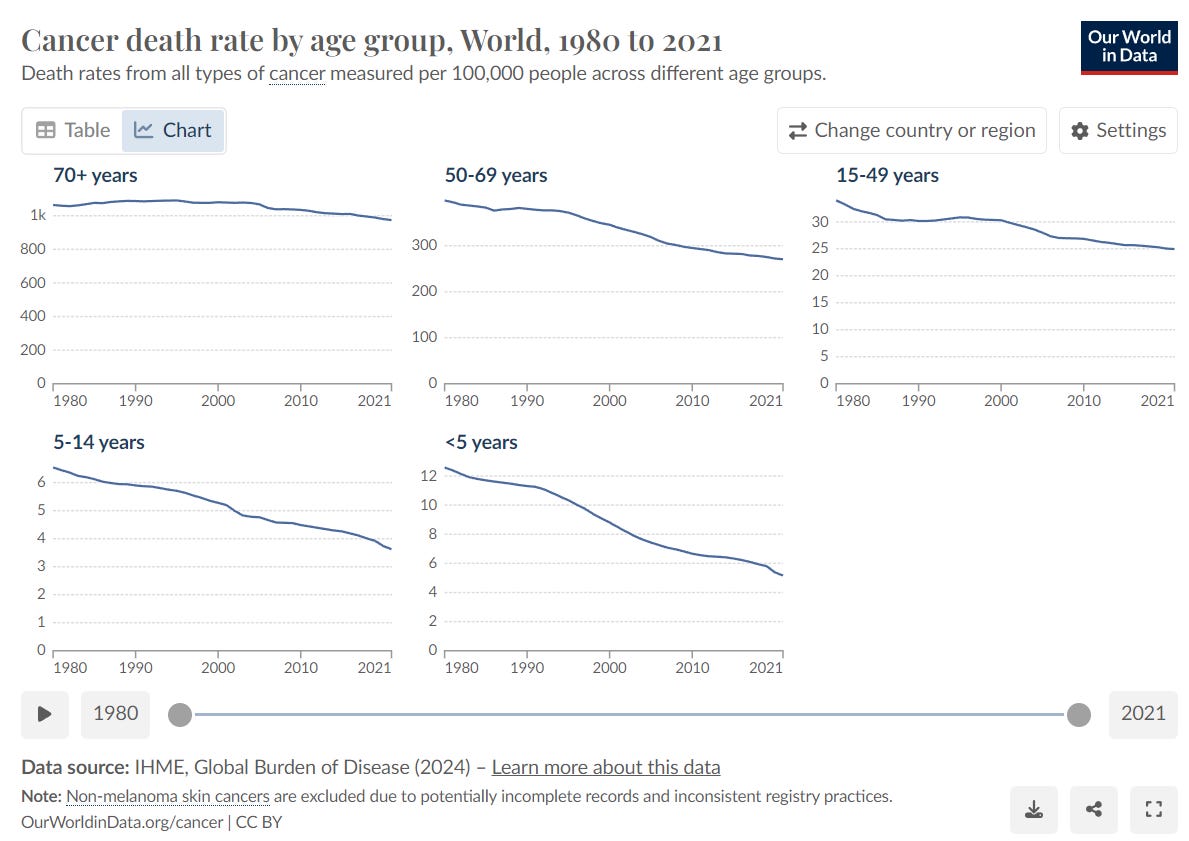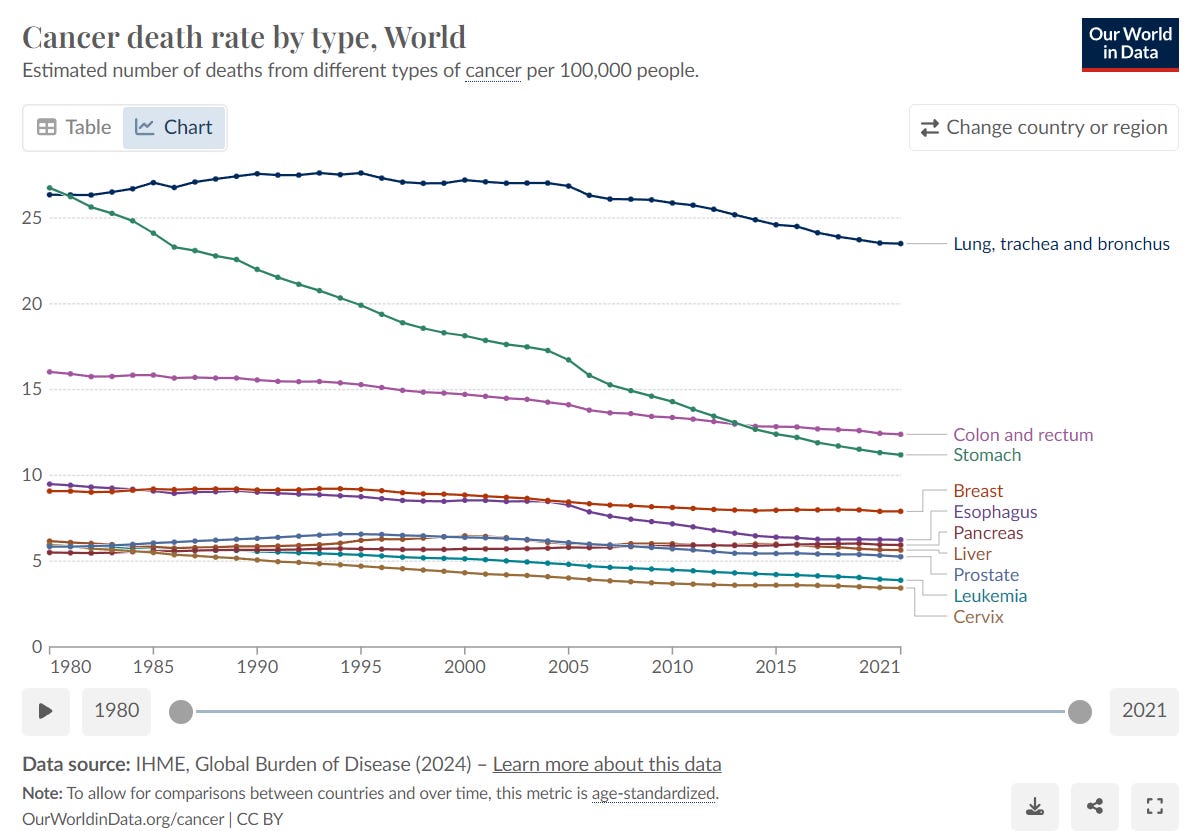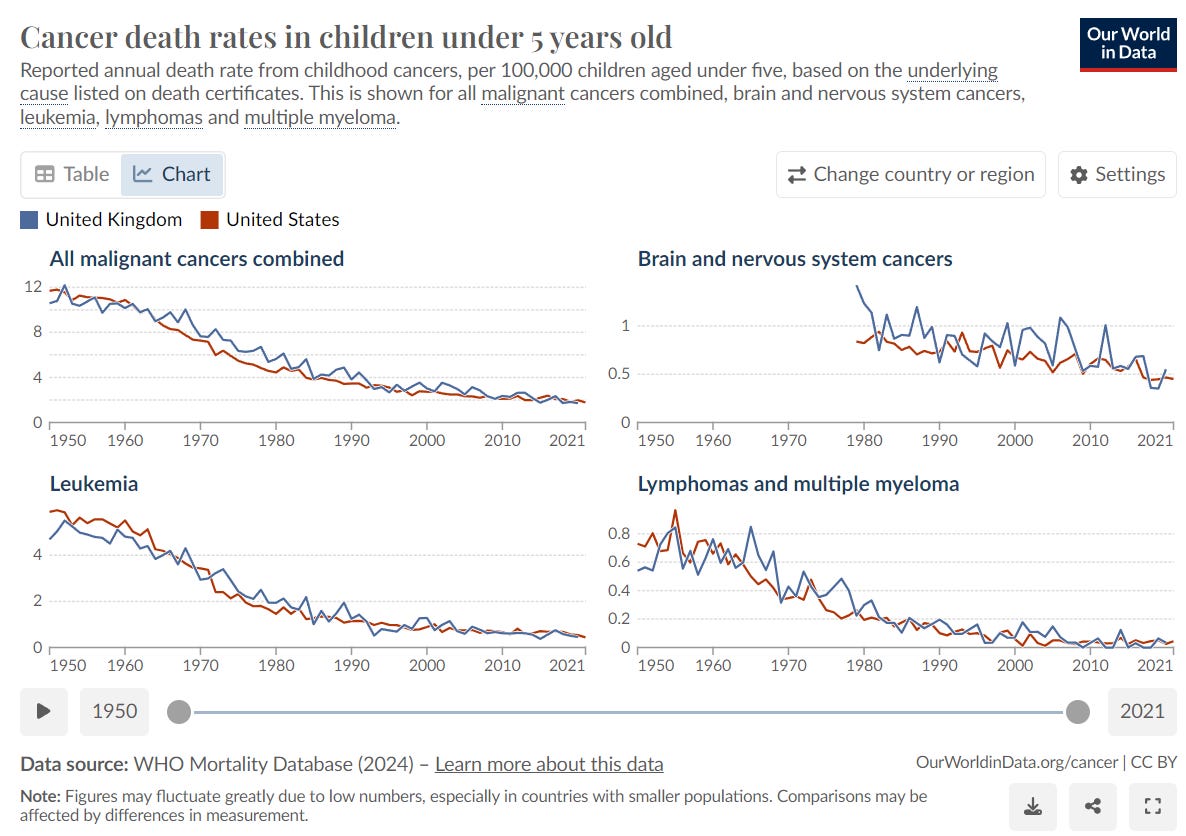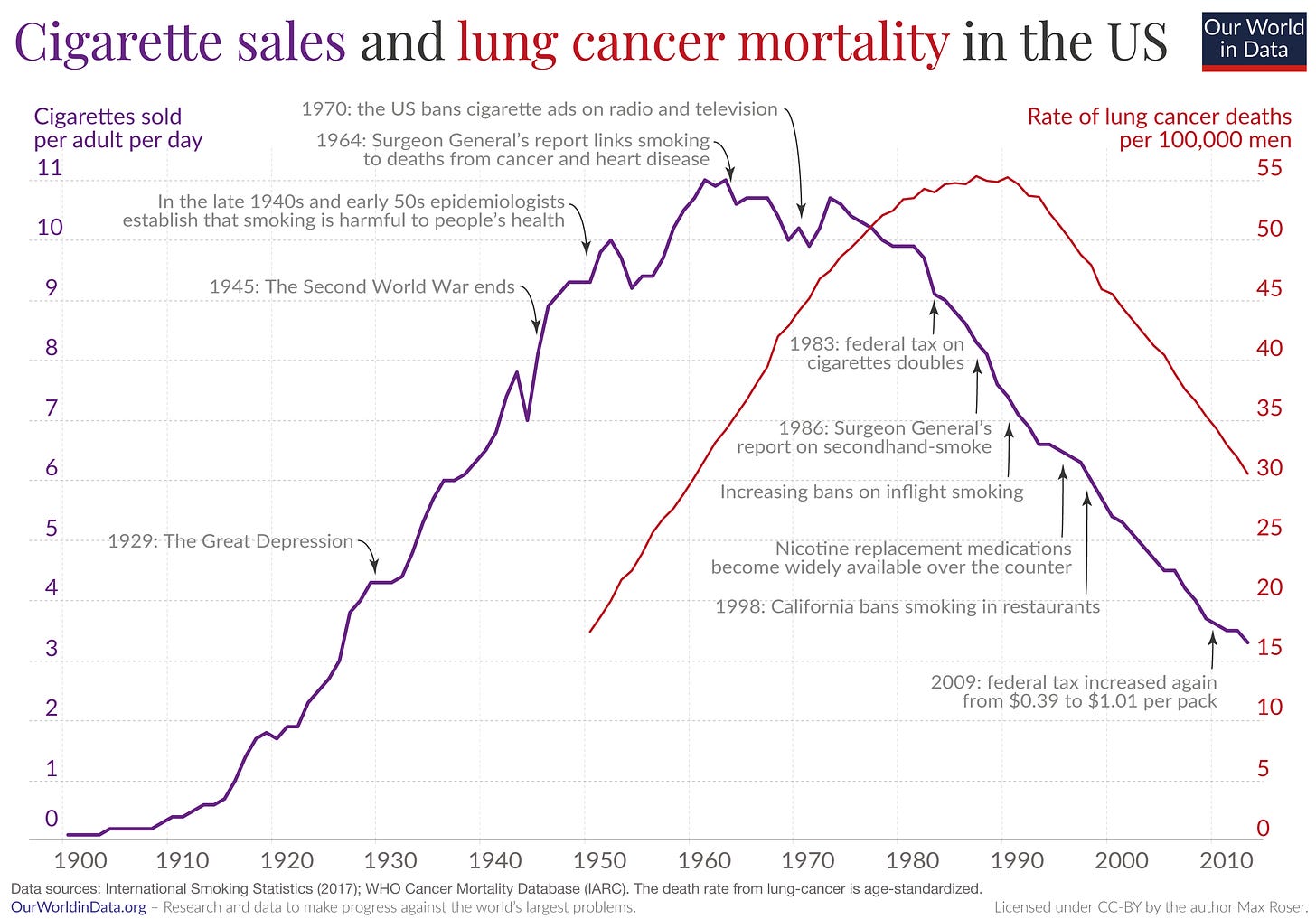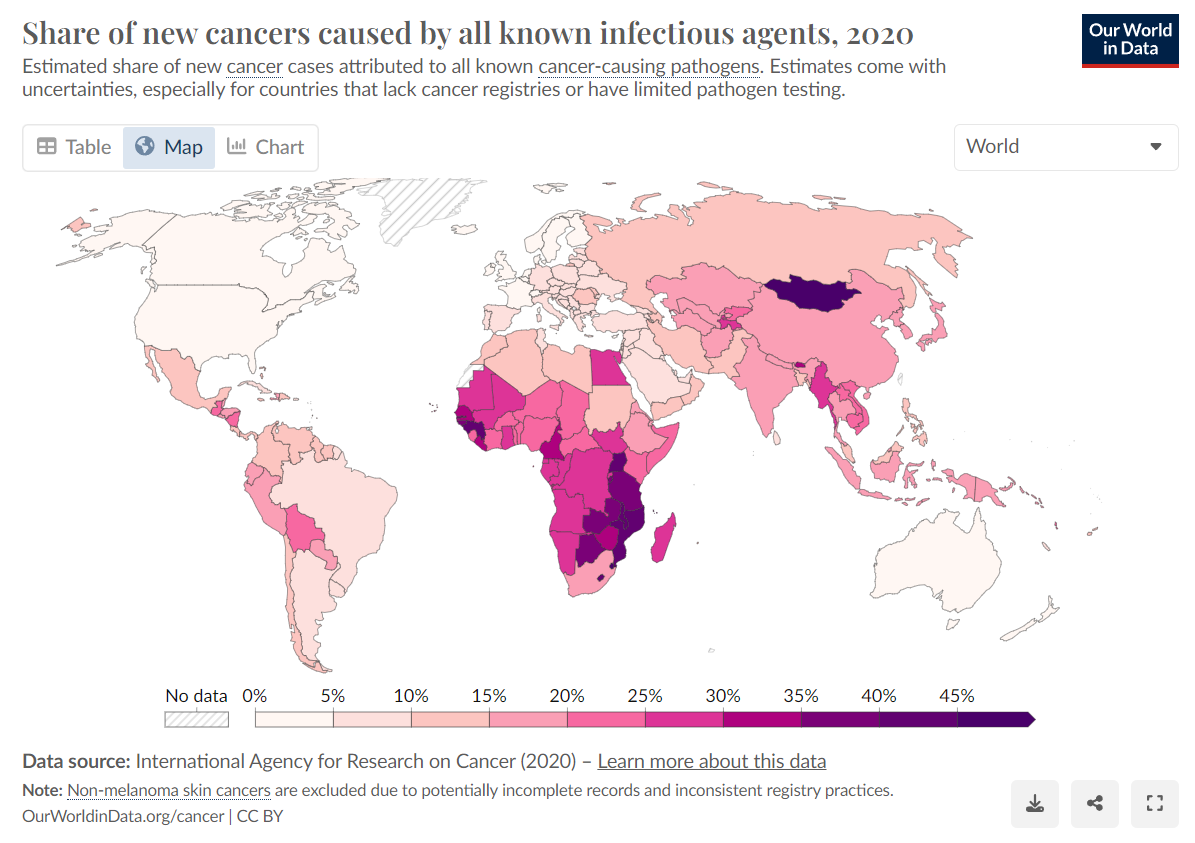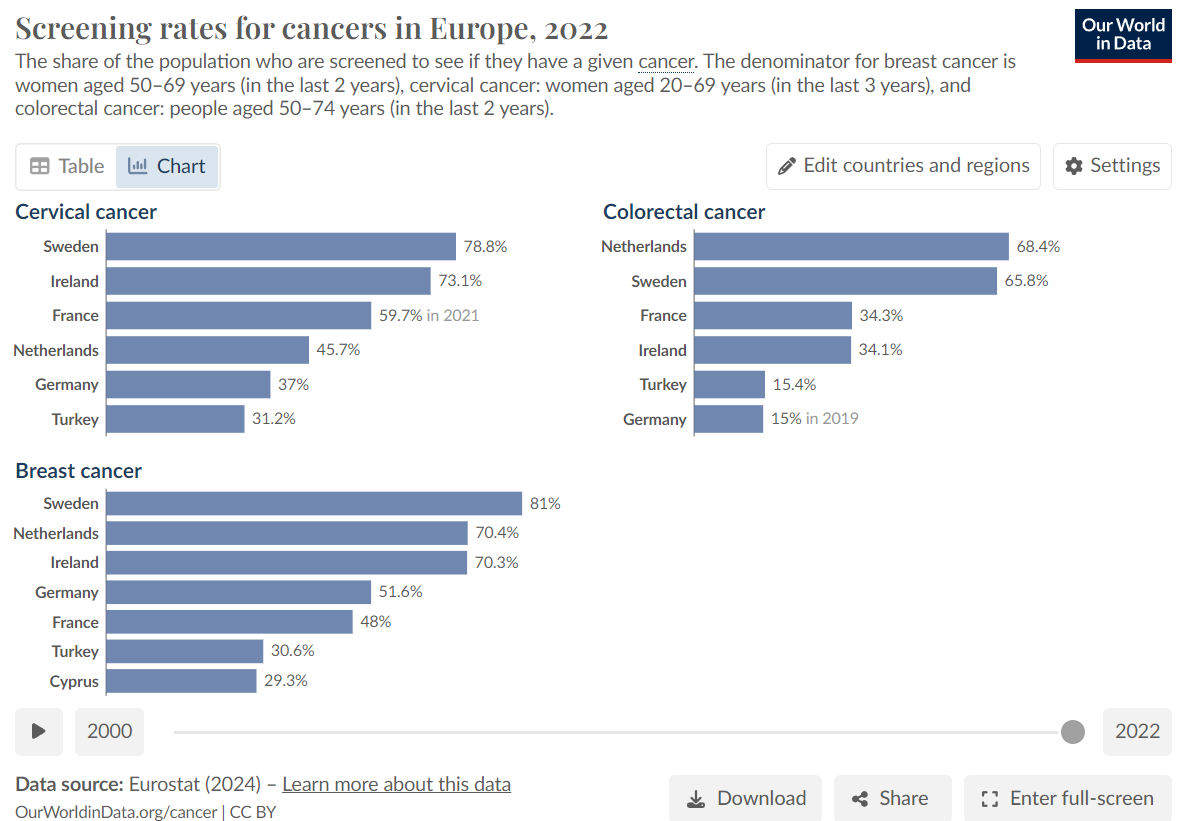Progress and stasis in the war on cancer
Insights with charts from Our World in Data
Our understanding of human nature and evolution, let alone our capacity to shape them, is limited by the sheer complexity of the human organism, of its underlying genetics, and of the biodiversity of the species. One indication of the extent of our limited understanding is our inability to tackle many of the innumerable diseases that plague humanity.
Cancer—a large group of diseases characterized by abnormal cell growth at the expense of the whole organism—is the second-biggest killer in the Western world, second only to cardiovascular diseases. In the United States, over 600,000 people die of cancer every year. In The European Union, cancer kills 1.1 million people every year, accounting for 21.6% of all deaths. Globally, cancer accounts for around 15% of all deaths. Cancer attracts a substantial part of medical R&D efforts. I cannot find a current figure, but one estimate suggests $307 billion will be spent on cancer-drug R&D worldwide in 2026, with 55% of these being focused on breast, lung, prostate, and blood cancer.
Our growing ability to prevent and treat cancers is one important metric of humanity’s rising biomedical prowess in the efforts to extend human health and life. The Our World in Data website has published a fascinating set of graphs shedding light on the deadly reality of cancer and our progress in tackling the disease.
Firstly, most forms of cancer especially affect older people.
While we have made progress in preventing and treating certain forms of cancer, deaths from cancer worldwide are steadily increasing.
This is partly due to a growing population, but mainly it is because life expectancy has more than doubled since 1900 from just 32 years to around 71 years today. As we pick the lower hanging fruit of human health—food security, basic sanitation, vaccine-preventable diseases—we increasingly die due to diseases more associated with organism breakdown in old age, such as cancer and cardiovascular diseases (which are also often associated with poor lifestyle habits in terms of exercise and food).
While the death rate from cancer is largely stable in the U.S., this is largely because of the aging population. The age-standardized death rate has significant declined since 1990 thanks to improved prevention and treatments. This includes better and earlier screening, reduction in risk factors such as smoking, and advances in chemotherapy, radiation therapy, immunotherapy, and surgery.
This trend can also be seen by age group: all groups from newborns to 69-year-olds has seen significant declines in cancer death rates, but not over-70s.
The progress is also visible by type of cancer (albeit with varying degrees of success):
And in the world by comparison:
The progress in tackling childhood cancers has notably been due to better understanding their genetic causes, enabling us to both identify them earlier and develop targeted treatments.
Anti-smoking campaigns and policies have had a massive impact in terms of reducing lung cancer.
Certain cancers are partly or entirely caused by infections (notably certain anal, penile, and vaginal cancers). Vaccination against human papillomavirus (HPV) and hepatitis B can prevent some of these. While the data is patchy, it seems there are very large international disparities in such cancers.
Even among developed countries, for instance in Europe, screening rates for different cancers and countries can vary widely.
All these figures (and others on Our World in Data), give us a sense of the sheer diversity of the ways cancers can kill us, of our constant efforts to defeat them, and of the disparities in conditions between countries.
The human body was not “designed” to live forever and hence naturally breaks down. The body being unbelievably complex, so are the ways of our breaking down and of preventing these breakdowns safely and effectively. We have made great progress in enabling people to live longer and healthier over the past 150 years or so. However, the more progress we make, the longer we live, leading to our dying in new ways that are rarer a younger ages. Barring success in rejuvenation or strange new forms of life (uploading your conscience on a computer), massive R&D and healthcare efforts will continue to be deployed in our efforts longer and healthier.


